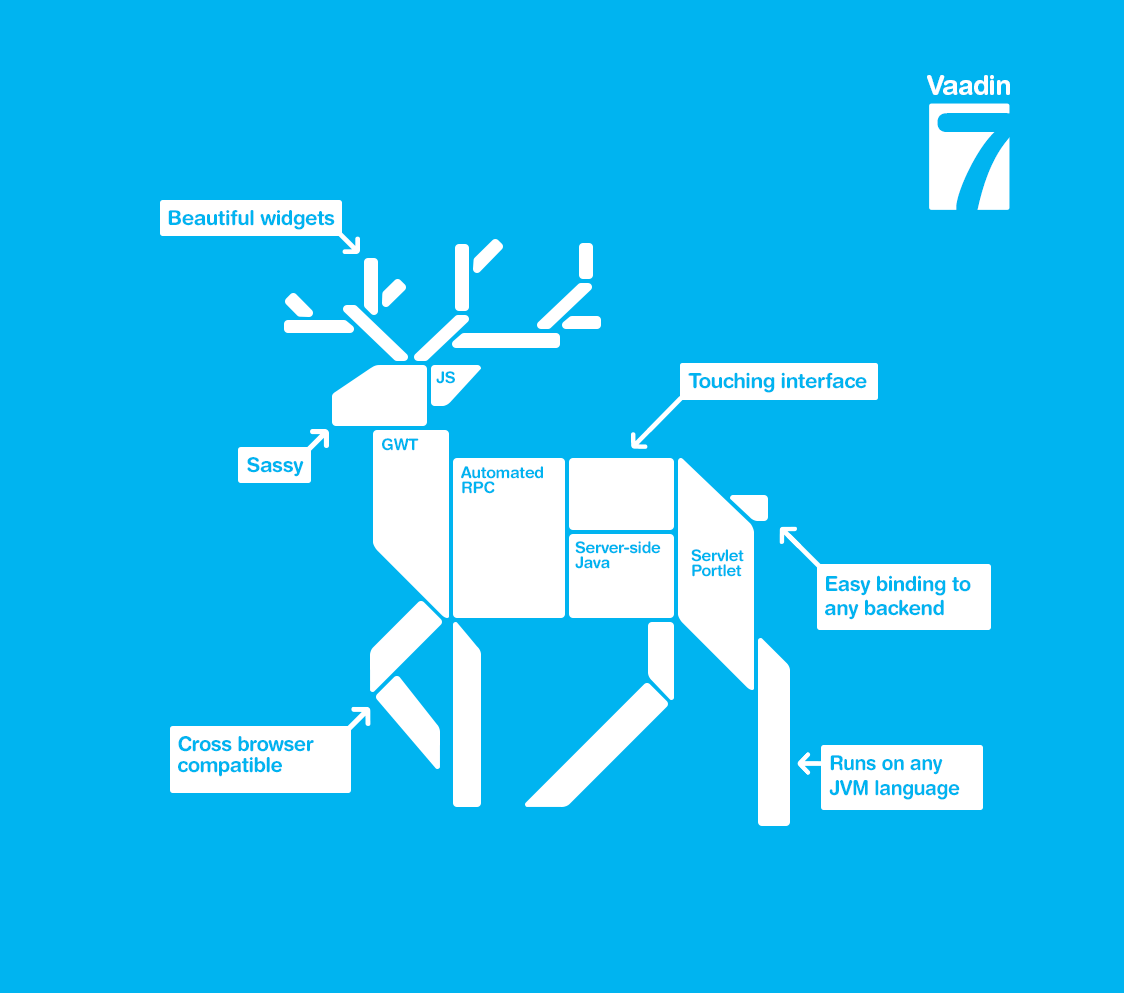
I am happy to announce that the wait is over. After 65 added features and hundreds of tickets, the Vaadin version 7.0.0 is released today and is now available for download at vaadin.com/download
No need to say that this is an important version release for us. This is the first major version release after the launch of Vaadin 6 in June 2009. Since then the Vaadin community has grown enormously. Currently we are over 40.000 registered members at vaadin.com and that goes to show that the framework is an important part of the Java enterprise tool set for many of us.
So what’s new in Vaadin 7?
The community is very active and professional and we have had good discussions and a lot of feedback about how to make Vaadin better. And we did make 7 better. We implemented a good number of new features in Vaadin 7.
The most prominent change is that Google Web Toolkit (GWT) is now an integrated part of Vaadin. In practice it means better support for client-side widget development and even the possibility to create offline applications with Vaadin. This gives us also better control over everything which will help us fix issues in GWT more quickly.
At the same time, we opened up the web stack more. The solid server-side programming model is still the foundation, but we invested in extendability more than ever before. The new RPC and shared state systems are in the heart of it, but also the redesigned Form data binding and included Sass support are features that add flexibility and help customizing the web user interfaces.
All this will make it easier to create new components and widgets for Vaadin and we are pretty sure we will see the results in the Add-on Directory. Overall, it has already proven to be one of the frameworks best features and a showcase for open source development.
We will not stop here. We are already planning for the roadmap for the next minor versions of 7 to publish some of the most wanted new features, that we now can implement with the new Vaadin 7 web stack.
Get it. Learn it.
The download is available for Maven, Ivy and Eclipse Plugin. We also expect the other IDEs (IntelliJ IDEA and Netbeans most importantly) follow soon and add support for Vaadin 7.
For backup for those not able to use these IDEs or dependency management tools, we still have the plain old Zip-file with all the dependencies.
For newcomers, there is also an updated video tutorial at vaadin.com/learn as well as an annotated Address Book Tutorial.
PS. Those looking for the source code for Vaadin 7. It is now at GitHub.
